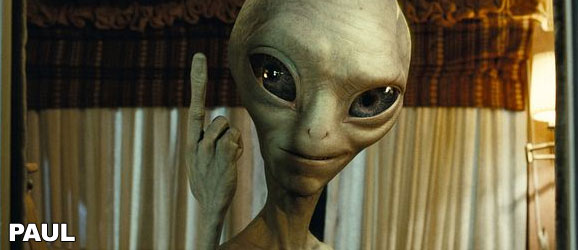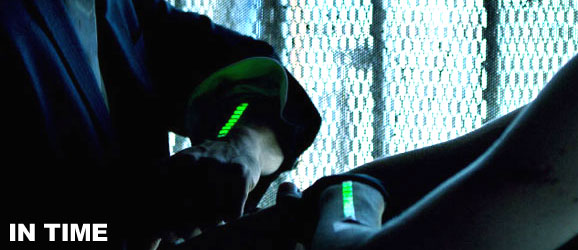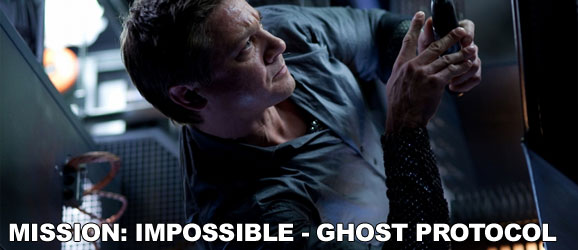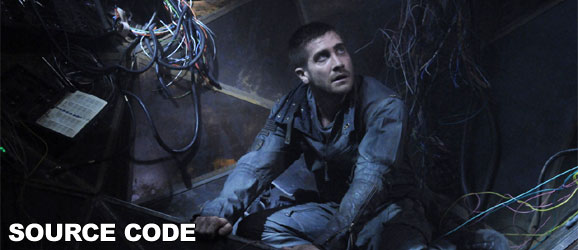The 8 Best Sci-Fi Ideas In 2011 Movies
Thought-provoking discourse, unimaginable creatures, or simply really cool gadgets.
Science fiction, unlike any other genre is about more than just characters or even good storytelling. Whether those ideas resulted in thought-provoking discourse, unimaginable creatures, or simply really cool gadgets we think it’s worth remembering the best of them. These are the 8 best science fiction ideas captured on film in 2011.
WARNING! The following article contains significant spoilers for some 2011 movies. If you don’t want to know, don’t go any further.

Blind, Hairy Aliens With Glowing Teeth
Blacker than midnight and without eyes of any kind, the aliens in Attack the Block look more like a hairy hole in the fabric of space than an actual creature, at least until they open their mouths. Thanks to the neon colors flowing through their innards, the extraterrestrials’ vicious looking fangs glow when they open their maw and go in for the kill. It’s a clever creature design, a great example of limited budget forcing filmmakers to think outside the box. It’s especially noteworthy in a year where so many big budget alien movies seemed to have run out of ways to make aliens look interesting. The best JJ Abrams’ mega-budgeted Super 8 could come up with was a giant spider and the less said about the generic outer space creatures in Battle: LA the better. Attack the Block deserves a lot of credit for creating creatures we’ve never seen before and then doing something cool with them.

Alien Wipes Out Ignorance By Sharing The Wonders Of The Universe
Most of the attention around the alien creature in the movie Paul, also named Paul, has been focused around his propensity for smoking pot and making dirty jokes. But that’s not actually the real genius of the character. What makes Paul so interesting as a science fiction idea is his ability to instantly share the wonders of the universe with anyone he encounters. Paul has the ability to touch the minds of others and in doing so, he fills their head up with all the accumulated knowledge of the cosmos. It’s such a powerful and true experience that everyone he uses it on is left utterly changed by it. Perhaps most critically it allows him to wipe away superstition and ignorance in anyone he touches. Kristen Wiig for instance, plays a devoutly religious woman who takes her Christianity almost to the point of extremism; but after Paul shares his knowledge with her, she’s instantly converted into a serious atheist. If only wiping away ignorance were really that easy.

Time As A Currency
Say what you want about the botched execution of former Gattaca director Andrew Niccol’s new sci-fi movie In Time, but the premise behind it is utterly brilliant. The film is about a future where mankind has discovered immortality, but only if you can afford it. Wages are now paid in time, transferred into a clock which ticks away on everyone’s arm. When the clock rounds out, you drop dead. The richer you are, the more time you have. The poor live, quite literally, one day at a time. The whole thing was a fantastic twist on the ideas of other great sci-fi properties like Logan’s Run (and if you buy into his lawsuit a book by Harlan Ellison). Even if the movie never really executed it properly, the idea was science fiction thinking at its very best. Here’s hoping that at some point down the road, someone else takes another stab at doing it justice.

The Bifrost
Science fiction Arthur C. Clarke’s well known third law of prediction says this: “Any sufficiently advanced technology is indistinguishable from magic.” No movie has ever embodied this way of thinking better than Thor. Marvel’s superhero film is the story of a group of alien beings from a planet called Asgard who once visited Earth in our distant past. Vikings mistook them from Gods, and thus was born Norse mythology. Thousands of years have passed, but the Asgardians are still so far advanced beyond us that everything they do seems like magic. And none of their magic is more spectacular than the Bifrost, as envisioned by director Kenneth Branagh. It works like a short cut in space but in practice it looks like a rainbow bridge leading out into the stars. It’s a stunning piece of special effects work and one of the coolest looking sci-fi ideas seen on screen this year.

Another Earth
Another Earth is mostly the story of two people dealing with the consequences of a deadly traffic accident, but lurking in the background is also a pretty interesting science fiction question. What if some time in the near future, humanity encounters itself? Scientists discover another Earth like planet sharing our orbit and as it draw closer, the world learns that not only is it Earth like, the planet is an exact duplicate of our own, complete with exact copies of everyone living on our Earth. Up until the moment of Earth 2’s discovery those people have been living precisely the same lives in precisely the same way as the people on our planet. There’s a duplicate of everyone in the world, who in turn things you’re a duplicate as well. The film ends the moment it’s about to begin actually exploring the consequences of this discovery, but not before it presents a brain-twisting sci-fi idea worth pondering. What might happen if you met yourself?

Portable Hallway Hologram Generator
The Mission: Impossible movies have always delivered on cool, sci-fi gadgets but they have more fun with this one than almost any other. In Ghost Protocol Tom Cruise and Simon Pegg infiltrate the Kremlin and use a portable screen to distract a guard. Deployed in a long hallway, the screen creates an exact 3D duplicate of the environment behind it, while obscuring anything on the other side of it. The device is even mobile. They push it down the hallway towards a guard who’s completely unaware that invaders are standing only a few feet away from him… and coming closer. The screen comes complete with a tracking module, which remains aware of where the guard is standing and adjusts to make sure the image its projecting fits his perspective no matter where he looks at it from. Though I doubt anyone has found a way to pull it off on this scale, this device isn’t entirely impossible with modern technology. In fact you can duplicate the tracking mechanism by making modifications to your Nintendo Wii.
Anti-Grav Suit
One of the biggest action sequences in Ghost Protocol has Jeremy Renner suiting up in what looks like a chainmail costume and diving into a tube where, hundreds of stories down a spinning metal fan waits to rip him to shreds. Beneath the fan his partner, played by Simon Pegg, has used a robot to position a super powerful magnetic repeller which, when it interacts with the suit, levitates Renner in mid-air and prevents him from hitting the fan. The magnet’s even mobile and with Renner trapped in its field the robot moves along the ground beneath him, pulling Renner suspended above circuitry and metal ducts below him. It’s not entirely fiction, either. Though I doubt it’s been used in quite this way, something similar is now possible using a technique called Quantum Locking.

Dead Soldiers Used To Stop Terrorism
In Source Code Jake Gyllenhaal plays a soldier who awakens on a train a few minutes before it explodes. His job is not to stop it from exploding, but to figure out who did it so that others can stop it from happening again. Except Jake Gyllenhaal isn’t a soldier and by the end of the film what we learn is that scientists have somehow managed to re-animate the brain of a soldier killed in combat, and then used it to send his consciousness into sort of a parallel simulation of the recent past. It’s a sci-fi idea so strange and complex that even after the movie’s big reveal, you may have had a hard time taking it all in. It raises a bunch of questions about the nature of life and death as well. When Gyllenhaal’s character is finally connected does his consciousness live on in a parallel universe? Or is the simulation some sort of heaven? Is it ethical to use the life force of someone who’s dead, even if it’ll save the lives of thousands or millions? Source Code’s story comes to a definitive conclusion but the sci-fi technology it invents to make the story happen only raises more deliciously complex questions.












